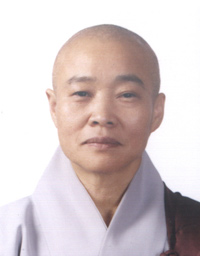Abstract: Dual Ordination in the Jogye Order of Korean Buddhism And the Dharmagupta Vinaya
by Bhiksuni Prof. Haeju
Professor, Dongguk University, Korea
This paper examines Korean bhikshuni precepts and ordination by examining dual ordination in the Jogye Order of Korean Buddhism and the Dharmagupta Vinaya.
The Jogye Order, the largest Buddhist order in Korea with a spiritual legacy of 1,600 years, is comprised of both monastics and lay devotees. Of the 13,000 monastics, about half are nuns (bhikshunis and shramaneris).
Ordination ceremonies had been performed on an individual basis, at the discretion of each temple or head monastery until 1981 when the Jogye Order mandated by law a unified platform to carry out the ordination ceremony order-wide en masse. Thus, a single monastery within the order is designated the "ordination monastery," and those who are to receive ordination in the Jogye Order are collectively ordained at this one location.
Bhikshunis are also ordained in this way but their full ordination requires a dual ordination. That is, shiksamanas are first ordained at a separate bhikshuni ordination platform by three principal and seven witness bhikshuni ordination masters, and then proceed to the main platform to be ordained by three principal and seven witness bhikshu ordination masters, which involves a total of 20 bhikshus and bhikshunis of twofold community to authenticate the official ordination.
In examining the bhikshuni precepts and dual ordination in the Jogye Order, I will look into the restoration of dual ordination in the Jogye Order based on the Dharmagupta Vinaya, and then explore the procedures for dual ordination and the system of three principal and seven witness bhikshuni ordination masters. I hope this paper may help with the preservation of the Korean bhikshuni orders and with their revival and regeneration as well.
Buddhismus (Foundation for Buddhist Studies) and
takes place in co-operation with the
Asia-Africa-Institute of the University of Hamburg.
See our list of sponsors.

